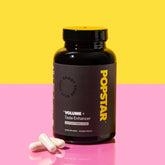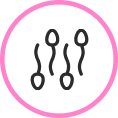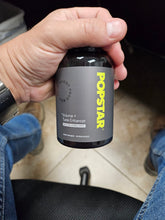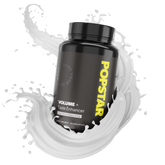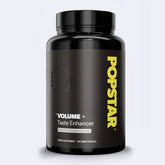Mittelschmerz ovulation pain is a mid‑cycle discomfort that some individuals experience around the time an ovary releases an egg. Although commonly associated with women’s reproductive health, knowledge of Mittelschmerz can also help men better understand a partner’s cycle, support reproductive planning, and reduce misunderstandings about sudden abdominal pain.
Table of Contents
- What Is Mittelschmerz Ovulation Pain?
- Key Takeaways
- Quick Facts About Mittelschmerz
- Understanding the Biology of Mittelschmerz
- Common Mittelschmerz Symptoms
- Mittelschmerz Causes
- How Mittelschmerz Relates to Fertility
- Mittelschmerz and Men’s Health: Why It Matters
- Physical, Emotional, and Relationship Impacts
- Risks, Red Flags, and When Pain Is Not Mittelschmerz
- Myths vs. Facts About Mid-Cycle Pain
- How to Manage or Reduce Ovulation Pain
- Interaction With Other Medical Conditions
- When to Seek Medical Help
- Frequently Asked Questions About Mittelschmerz
- References and Further Reading
- Disclaimer
What Is Mittelschmerz Ovulation Pain?
Mittelschmerz ovulation pain refers to one‑sided lower abdominal pain that occurs during ovulation, typically around the middle of the menstrual cycle. The term "Mittelschmerz" comes from German, meaning "middle pain." It is usually mild to moderate and lasts from a few minutes to two days.
Key Takeaways
- Mittelschmerz is a normal, mid‑cycle ovulation pain that occurs in some people with menstrual cycles.
- Pain is often one‑sided and corresponds to the ovary releasing an egg.
- Mittelschmerz symptoms may include cramping, pinching, pressure, or mild sharp pain.
- Mittelschmerz causes include follicle growth, follicle rupture, and fluid release during ovulation.
- Mid‑cycle ovulation pain is not harmful and may help predict fertile days.
- Severe or persistent pain is not typical and should be evaluated by a clinician.
- Understanding ovulation pain can help men support partners and improve communication.
- Ovulation pain symptoms may overlap with more serious conditions like appendicitis or ovarian cyst issues.
Quick Facts About Mittelschmerz
| Category | Summary |
|---|---|
| Definition | Mid‑cycle ovulation pain caused by the release of an egg |
| Timing | Around day 10–16 of a typical menstrual cycle |
| Common Symptoms | Mild cramping, pressure, sharp or pinching pain |
| Duration | Minutes to 48 hours |
| Key Causes | Follicle rupture, fluid release, ovary movement |
| Fertility Relevance | Often coincides with peak fertility days |
| Risk Level | Generally low unless pain is severe or unusual |
| When To Seek Help | Intense, persistent, or fever‑associated pain |
Understanding the Biology of Mittelschmerz
Mittelschmerz occurs during ovulation when a mature ovarian follicle bursts and releases an egg. This process can cause irritation due to fluid, blood, or pressure changes.
Biological Factors
- Follicular growth stretches the ovarian surface.
- The follicle ruptures, releasing an egg and fluid.
- Fluid may irritate nearby tissues.
- Smooth muscle contractions in reproductive organs may cause cramping.
Common Mittelschmerz Symptoms
Common symptoms include:
- One‑sided lower abdominal pain
- Mild sharp or stabbing pain
- A sense of pelvic heaviness
- Light cramping
- Spotting (occasional)
Mittelschmerz Causes
Primary Causes
- Follicle stretching
- Egg release
- Fluid or trace blood irritating the abdominal lining
- Increased prostaglandin activity
Secondary Contributors
- Dehydration
- Stress affecting hormonal patterns
- Physical activity
How Mittelschmerz Relates to Fertility
Mittelschmerz often occurs on the most fertile day(s) of the cycle, making it useful for couples tracking fertility.
Fertility Insights
- Pain usually coincides with ovulation.
- It may indicate a 12–24 hour window of egg viability.
- Helps couples time intercourse when trying to conceive.
Mittelschmerz and Men’s Health: Why It Matters
Understanding ovulation pain helps men support partners, improve relationship communication, and make informed decisions about fertility.
Key Points for Men
- Recognizing cycle‑related pain reduces misunderstandings.
- Awareness supports family planning.
- Helps differentiate harmless symptoms from emergencies.
Physical, Emotional, and Relationship Impacts
Mid‑cycle pain may cause physical discomfort and emotional sensitivity. Awareness fosters compassion and reduces conflict.
Risks, Red Flags, and When Pain Is Not Mittelschmerz
Mittelschmerz is typically mild. Severe pain may indicate:
- Ovarian cyst rupture
- Appendicitis
- Pelvic inflammatory disease
- Endometriosis
- Ectopic pregnancy
Risk Reduction Table
| Risk | How To Reduce It |
|---|---|
| Misidentifying pain | Track cycle symptoms consistently |
| Dehydration | Maintain regular fluid intake |
| Severe cramping | Use NSAIDs as directed by a clinician |
| Underlying conditions | Seek evaluation for recurring severe pain |
Myths vs. Facts About Mid‑Cycle Pain
| Myth | Fact |
|---|---|
| Ovulation pain is dangerous | It is usually harmless |
| Only severe pain is ovulation pain | Most is mild to moderate |
| Pain means infertility | Ovulation pain does not signal infertility |
| It happens every cycle | It can vary cycle to cycle |
How to Manage or Reduce Ovulation Pain
Helpful strategies include:
- Using warm compresses
- Light stretching or walking
- Over‑the‑counter pain relievers
- Hydration
- Stress reduction
Interaction With Other Medical Conditions
Ovulation pain may worsen if someone has:
- Endometriosis
- Ovarian cysts
- Pelvic adhesions
- History of pelvic infections
When to Seek Medical Help
Seek medical care if pain is:
- Severe
- Persistent over multiple days
- Associated with fever, nausea, or vomiting
- Different from usual cycle patterns
Frequently Asked Questions About Mittelschmerz
What does Mittelschmerz mean?
Mittelschmerz means mid‑cycle ovulation pain. It describes one‑sided abdominal discomfort during egg release.
Is Mittelschmerz normal?
Yes. Many individuals experience occasional ovulation pain.
How long does Mittelschmerz last?
It can last minutes to 48 hours.
Can Mittelschmerz affect fertility?
It does not harm fertility and may help identify fertile days.
What causes Mittelschmerz pain?
Follicle rupture, fluid release, and hormonal changes are common causes.
Is severe ovulation pain normal?
Severe pain is not typical and requires medical evaluation.
How can someone tell if pain is ovulation or something else?
Tracking cycle timing and patterns helps differentiate causes.
Can Mittelschmerz switch sides?
Yes. Ovulation alternates sides in many cycles.
Can Mittelschmerz cause nausea?
Mild nausea may occur but should not be severe.
Does stress worsen ovulation pain?
Stress can influence hormonal fluctuations and may worsen symptoms.
Can ovulation pain mimic appendicitis?
Yes, right‑sided Mittelschmerz may resemble appendicitis.
How can men support a partner with Mittelschmerz?
Offer empathy, assist with comfort measures, and recognize cycle timing.
Does Mittelschmerz mean someone is healthy?
It usually indicates normal ovulatory function.
What if mid‑cycle pain happens every month?
Monthly pain can still be normal but should be evaluated if intense.
Does birth control stop Mittelschmerz?
Hormonal contraceptives often reduce or eliminate ovulation pain.
When should someone seek a doctor for ovulation pain?
Seek help for sudden, severe, or unusual pain.
References and Further Reading
- National health service overviews on ovulation pain
- Reputable gynecology and reproductive health organizations
- Professional urology associations for male reproductive information
- Peer‑reviewed research on ovulation and cycle‑related pain
Disclaimer
This article is for informational and educational purposes only and does not constitute medical or mental health advice. It is not a substitute for speaking with a qualified healthcare provider, licensed therapist, or other professional.
